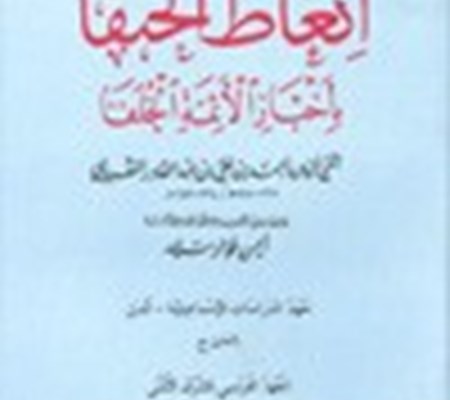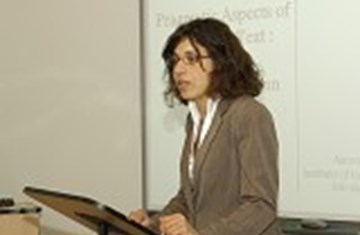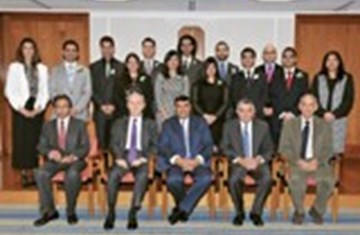IIS Publishes Arabic Critical Edition of al-Maqrizi’s Itti‘az al-hunafa’

The Itti‘az is perhaps the most important single primary source for the history of the Fatimids. Although the Fatimids had long ceased to exist by the time of al-Maqrizi, he nonetheless endeavoured to investigate this Shi‘i dynasty and its reign with care and sympathy, although he was himself a Sunni Muslim. He tried to avoid sectarian partisanship whilst seeking accuracy and fairness in historical documentation. The Itti‘az is also unique amongst al-Maqrizi’s writings in the sense that it was devoted exclusively to Fatimid historiography.
This classical source in historiography is presented in a four-volume Arabic critical edition that is primarily based on manuscripts from the collections housed at the IIS Library, and forms part of the Institute’s Ismaili Texts and Translations Series. This edition of the Itti‘az was edited by the distinguished Egyptian scholar, Professor Hyman Fu'ad Sayyid, who is one of the foremost authorities on Fatimid history in Egypt as well as on al-Maqrizi’s corpus. The volumes are also prefaced with a synoptic English introduction by Professor Paul E Walker.
Al-Maqrizi’s Itti‘az presents comprehensive historical accounts from the earliest periods of Muslim history until the end of the Fatimid epoch. The first volume includes biographies of the early Ismaili Imams and traces their genealogy to the first Shi‘i Imam, ‘Ali b. Abi Talib (d. 661 CE), taking into account key periods in Ismaili history such as the dawr al-satr, or period of concealment, the initiation of the Ismaili da‘wa in Yemen and North Africa, the establishment of the Fatimid state in 909 CE, and the era of the Fatimid Imam-Caliphs al-Mu‘izz li-Din Allah and al-‘Aziz bi’llah (d.996 CE).
The second volume deals with the rule of the Fatimid Imam-Caliphs al-Hakim bi-Amr Allah (d. 1021 CE), al-Zahir li-I‘zaz Din Allah (d. 1035 CE), and al-Mustansir bi’llah (d. 1094 CE). The dispute over Imam al-Mustansir’s succession, which revolved around the claims of the eldest son Abu Mansur Nizar, who had been designated as the successor, and his much younger half-brother Abu’l Qasim Ahmad al-Musta‘li bi’llah, caused a split in the Ismaili community. The third volume focuses on the eras of al-Musta‘li bi’llah (d.1101 CE) whose followers continued in Egypt as the Fatimids and then successive Musta‘lian imams in this line, al-Amir bi-Ahkam Allah (d.1130 CE), al-Hafiz li-Din-Allah (d.1149 CE), al-Zafir bi-Amr Allah (d.1154 CE), al-Fa‘iz bi- Nasr Allah (d.1160 CE), and al-‘Adid li-Din Allah (d.1171 CE). Finally, the fourth volume presents detailed indexes covering names, terms, places and urban sites in Fatimid Cairo, including specific topographies and architectural settings, the particulars of governmental offices, ranks and titles of nobility, tribal affiliations, inventories of palatial possessions and even types of food and diets. Supported by an extensive bibliography, this volume also includes Qur’anic and poetic verses, names of manuscript authors and book titles.






